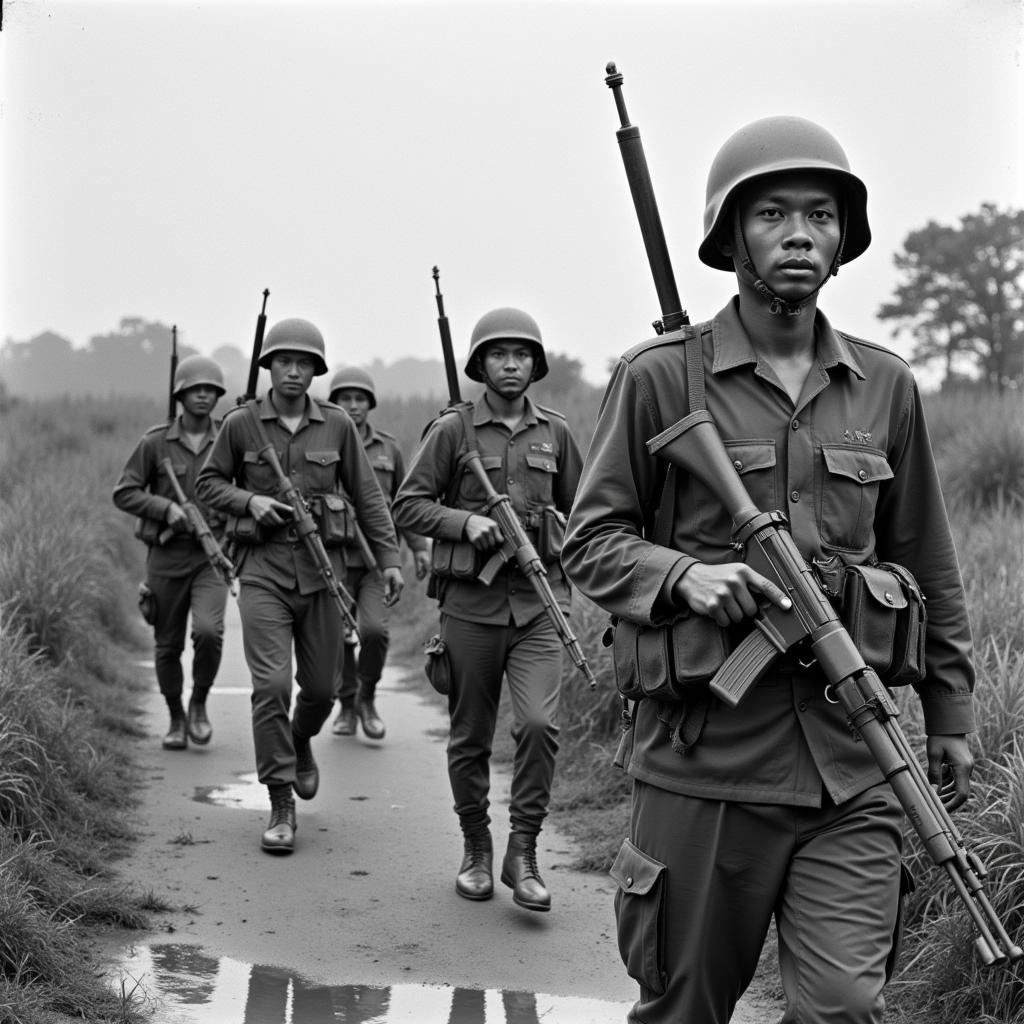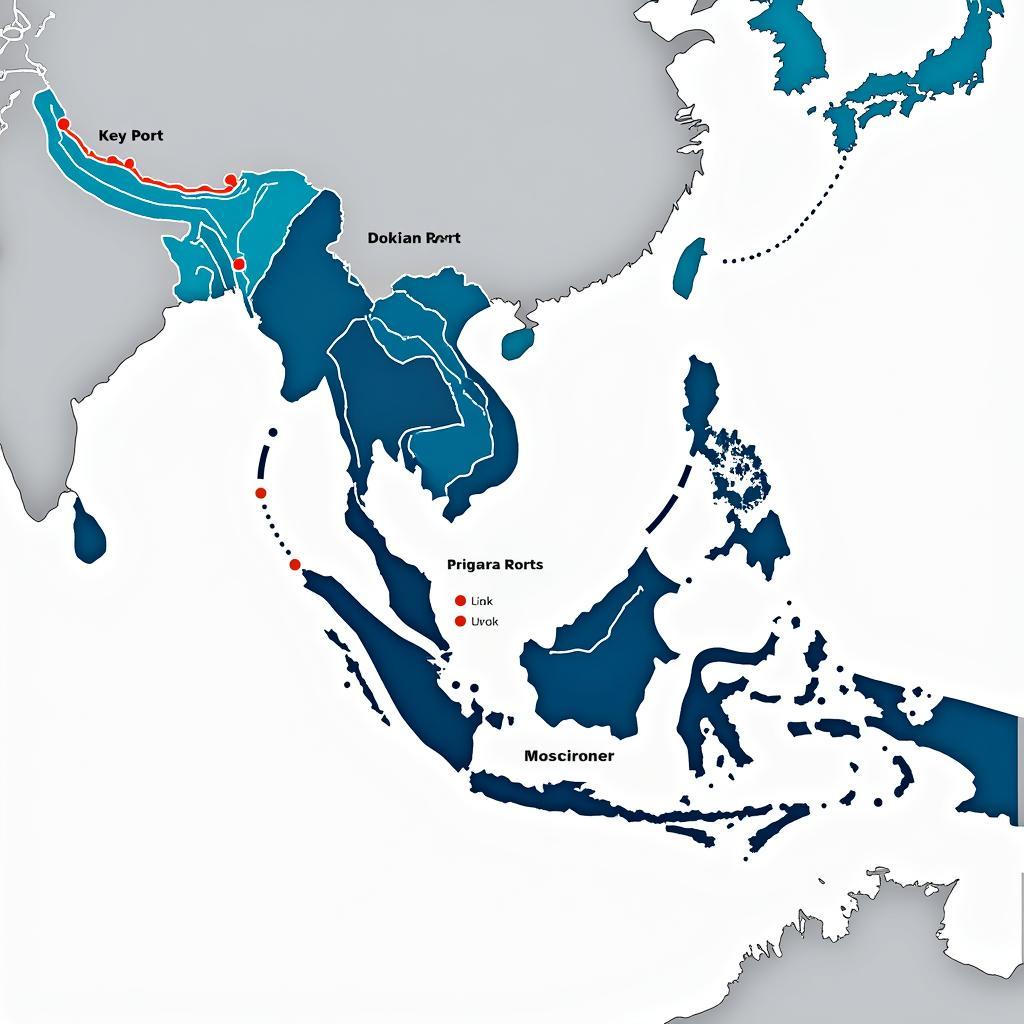The Vietnamese occupation of Cambodia, lasting from December 1978 to September 1989, remains a complex and sensitive topic within the context of ASEAN. The event had a profound impact on regional stability and the development of ASEAN itself. This period saw Cambodia engulfed in conflict, with Vietnam seeking to overthrow the Khmer Rouge regime and install a new government.
The Domino Effect Fear and ASEAN’s Response
At the time, the Cold War was at its peak, and Southeast Asia was a key battleground. The fall of Saigon in 1975, followed by the rise of the Khmer Rouge in Cambodia, fuelled fears of a communist domino effect throughout the region. While Vietnam’s invasion successfully removed the genocidal Khmer Rouge from power, it was also seen by some as an act of aggression against a sovereign nation.
ASEAN, then a relatively young organization, faced a dilemma. Its founding principles centered on non-interference in the internal affairs of member states. However, the crisis in Cambodia threatened regional security and tested ASEAN’s commitment to its principles.
 Vietnamese Troops in Cambodia
Vietnamese Troops in Cambodia
A Divided ASEAN and International Pressure
The Vietnamese occupation of Cambodia caused deep divisions within ASEAN. Countries like Thailand and Singapore, fearing Vietnamese expansionism, condemned the invasion and supported the Khmer Rouge’s claim to Cambodia’s seat at the United Nations. Indonesia, Malaysia, and the Philippines, however, adopted a more neutral stance, recognizing the need to address the humanitarian crisis in Cambodia while seeking a peaceful resolution.
Internationally, the Cold War heavily influenced responses. The Soviet Union and its allies supported Vietnam, while the United States, China, and many Western nations backed the Khmer Rouge in a bid to contain Vietnamese influence.
 ASEAN Leaders Convening During the Cambodia Crisis
ASEAN Leaders Convening During the Cambodia Crisis
The Path to Peace and Cambodia’s Reconstruction
Through the 1980s, ASEAN played a crucial role in facilitating dialogue and seeking a political solution to the Cambodia conflict. This included supporting the formation of a coalition government in exile, comprising the Khmer Rouge, the royalist FUNCINPEC, and the anti-communist KPNLF.
After years of negotiations, a peace agreement was signed in Paris in 1991. The accord mandated the withdrawal of Vietnamese troops, the disarmament of factions, and the establishment of the United Nations Transitional Authority in Cambodia (UNTAC). This UN peacekeeping mission oversaw elections in 1993, marking a turning point for Cambodia and the beginning of its journey toward peace and reconstruction.
ASEAN’s Evolving Role: From Non-Interference to Proactive Engagement
The Vietnamese occupation of Cambodia had a lasting impact on ASEAN. The crisis forced the organization to confront the limitations of its non-interference policy and adapt to a changing geopolitical landscape. While ASEAN initially struggled to present a united front, the experience ultimately led to a more proactive approach in regional security issues.
Today, ASEAN maintains its commitment to non-interference but recognizes the need for collective action and dialogue in addressing shared challenges. The organization has played an instrumental role in promoting peace and stability in Southeast Asia, drawing valuable lessons from the Cambodian experience.
Conclusion
The Vietnamese occupation of Cambodia remains a contentious chapter in ASEAN’s history. It highlighted the complexities of regional dynamics, the challenges of upholding core principles, and the devastating consequences of conflict. However, this period also underscores ASEAN’s capacity for adaptation and its evolving role in fostering dialogue, promoting peace, and navigating the complex geopolitical landscape of Southeast Asia.
FAQs
1. Why did Vietnam invade Cambodia?
Vietnam cited the brutal Khmer Rouge regime’s cross-border raids and human rights abuses, including the persecution of ethnic Vietnamese, as justification for the invasion. Vietnam aimed to remove the Khmer Rouge from power and establish a friendly government in Cambodia.
2. How did the international community respond to the occupation?
The response was divided, largely influenced by the Cold War. The Soviet bloc supported Vietnam, while the West and China backed the Khmer Rouge. ASEAN members were also split in their reactions, with some condemning the invasion and others taking a more neutral stance.
3. What was the significance of the Paris Peace Accords?
The 1991 Paris Peace Accords were a pivotal step towards ending the Cambodian conflict. They led to the withdrawal of Vietnamese troops, the disarmament of factions, and paved the way for UN-supervised elections and the formation of a new Cambodian government.
4. How did the Cambodian crisis change ASEAN?
The crisis forced ASEAN to confront the limitations of its non-interference principle and adopt a more proactive approach to regional security. It highlighted the importance of dialogue, consensus-building, and collective action in addressing shared challenges.
5. How does ASEAN view Cambodia today?
Cambodia is a valued member of ASEAN. The organization played a crucial role in Cambodia’s peace process and continues to support its development, promoting regional integration and cooperation.
Need more information or assistance? Contact us!
Phone: 0369020373
Email: [email protected]
Address: Thon Ngoc Lien, Hiep Hoa, Bac Giang, Vietnam.
Our dedicated customer support team is available 24/7 to assist you.


